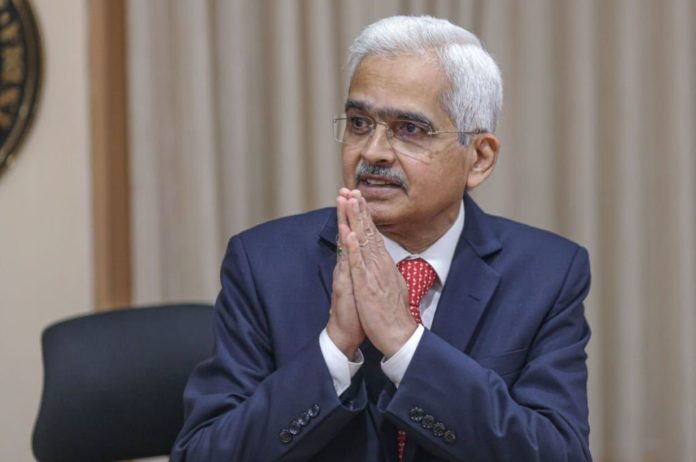On Friday, the value of the rupee fell to its lowest level against the U.S. dollar, prompting Delhi to boost import taxes on gold and oil. High prices for commodities on the world market have caused a domino effect, with import bills going up and the revenue deficit getting worse.
After the Indian rupee hit new lows this week, economists recommended the Reserve Bank of India (RBI) and the Indian government let the exchange rate decline naturally rather than artificially halt it.
The experts say that India’s macroeconomic fundamentals are still strong, even though major economies are being hit by inflation like never before.
Professor N. R. Bhanumurthy, the vice-chancellor of the Dr. B.R. Ambedkar School of Economics University (BASE), cited the recent collapse in the value of the Indian rupee versus the US dollar on “open-economy macroeconomic issues.” On Friday, the rupee sold for as little as 79.11 against the USD, marking an all-time low.
“Rupee depreciation is largely due to open-economy macroeconomic issues,” as explained by Bhanumurthy to Sputnik, “such as [a] sharp increase in US interest rates (leading to the outflow of foreign capital), widening current account deficit due to higher world oil prices as well as expected decline in exports, and also due to rising inflationary pressures in India.”
At the most recent FOMC meeting, the Federal Reserve adopted an aggressive posture and increased interest rates by 75 basis points as US inflation spiked to almost a four-decade high.
Foreign investors withdrew over $25.7 billion from Indian equities due to the greater returns on investment in the US market. Since April, when the Fed adopted a hawkish posture against inflation, the rate of withdrawal has accelerated.
The RBI data indicates that between January and April, it spent almost $18 billion to stabilize the rupee versus the dollar. However, due to high commodity costs, notably the cost of crude oil, India’s trade imbalance reached a record high of $24 billion in May, far outpacing its exports. The price of the Indian crude oil basket increased from $73.30 per barrel in December 2021 to $117.20 per barrel in June.
As the price of crude oil is close to $120 per barrel, there is still a considerable demand for dollars.
When asked how to stop the demand for the dollar, Bhanumurthy said, “This may be managed through two ways,” according to the expert, “allowing the exchange rate to depreciate smoothly and allow the foreign exchange reserves to decline. India is well cushioned with nearly $600 billion reserves, which can smoothen the volatility in the forex market.”
Additionally, the economist stressed that the rupee’s depreciation is significantly smaller “than the depreciation of other emerging market economies”.
In comparison to the euro and Japanese yen, the rupee has declined by more than 6% this year, while the dollar index has increased by more than 9%.
The Finance Ministry has increased the import duty on gold by 5% to reduce the demand for the yellow metal in reaction to different estimates that India’s balance of payments deficit may increase to $40 billion in 2022 from a surplus of $55 billion in 2021.
According to Finance Minister Nirmala Sitharaman, such measures, such as the implementation of a windfall tax on gasoline exports, are necessary in these “extraordinary times.”
Positive aspect
Shaktikanta Das, governor of the RBI, admitted on Thursday that the changing global conditions are having a substantial impact on the Indian economy but emphasized that the “innate strength and resilience of our macro fundamentals” is sparking a steady recovery.
Bhanumurthy agreed with the RBI’s assessment and praised the actions taken recently by the government and the Central Bank.
“Domestic fundamentals are quite strong, especially due to well-managed fiscal and monetary policies,” said the expert, adding “However, almost one-fourth of the growth depends on the external sector. Because of many global downside risks, that component of the growth could take a hit and might affect the overall growth.”
Crisil, an Indian division of S&P Global, pointed to several positive developments on Friday, including an increase in contact-intensive services, higher tax collections, and the expectation of a typical and evenly distributed monsoon.
“While higher tax collections are partly a result of higher inflation leading to higher nominal growth,” said CRISIL, adding “they also reflect the healthy momentum observed in the first quarter of the current fiscal.”
Former chief economic counselor to the Indian government and economist K. V. Subramanian recommended international investors to regard India differently from other emerging markets.
“India’s macroeconomics is fundamentally better than emerging market economies because of sound economic policy,” said Subramanian, “So, treat India as positively different from other emerging economies.”
The former economic advisor claimed that the Indian economy was gaining speed, as seen by May’s 18% growth in core sector output and April’s 7.1% eight-month high for the Index of Industrial Production.
Additionally, retail inflation decreased from a nearly eight-year high of 7.79% in April to 7.04% in May.
Subramanian thinks that private investment will go up when the uncertainty caused by the conflict in Ukraine goes away. “Amidst global recession, India should grow approximately 7%,” he continued.
In contrast to a projected 6.6% decline in 2020, India’s economy increased by 8.7% last year. The RBI kept its prediction for this year’s GDP growth at 7.2% despite the global headwind.
Even though they are down $50 billion from their peak of $640 billion in September 2021, India still has enough foreign exchange reserves to last for nearly 10 months’ worth of imports.
According to information issued by the RBI on Friday, foreign exchange reserves reversed a three-week decline and increased by $2.734 billion to $593.323 billion on June 24, 2022.
Given the upward rise in GDP growth forecast for the following year compared to downward revision by other countries, many analysts anticipate the return of foreign portfolio investors in the medium term.
Image Credit: Getty
You were reading: Indian Economy Stays Strong Despite Depreciating Rupee – Report
